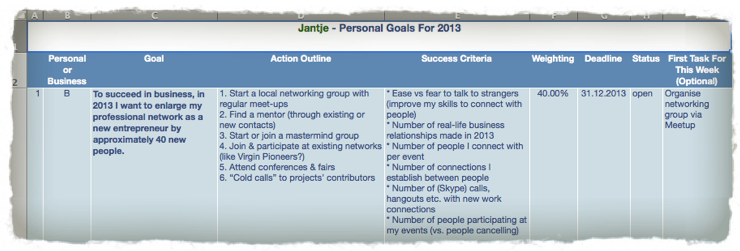 If you are a regular visitor to this blog, you might have read the different articles on setting your goals and how to achieve them. I have also written a post on the concept of personal development plans.
If you are a regular visitor to this blog, you might have read the different articles on setting your goals and how to achieve them. I have also written a post on the concept of personal development plans.
In the last weeks, there have been several people requesting more information on this, so, I have decided to dedicate this month’s Learning Bite on creating a Personal Development Plan.
For those of you who are not familiar with the Learning Bites Series, the Learning Bites are short exercises, which you can complete within 10-15 minutes on your own or with someone to practice some of the things discussed and touched upon on the Smart Self Development Plan.
Are you interested?
Learning Bites #5: Outlining a Personal Development Plan in 15 Minutes
Before we get into the details, have a read through this post which explains what a personal development plan is, if you have not done so already. It explains why it is good to have one and it outlines how to write it. My intention is to make it even more practical in this article right here.
Come back here when you are done, we will be waiting for you. 🙂
For the others, have a look at the following citation:
“People often say that motivation does not last. Well, neither does bathing – that’s why we recommend it daily.” – Zig Ziglar
I chose this citation as somewhat of a motto for this exercise, as I observe and discover myself that the more I remind myself on my goals, the more motivation I have. If I do not do that on a regular basis, the motivation level risks to go down.
Do you experience something similar?
Part 1 (10 Minutes): Writing the plan
1. Think of one objective that you would like to achieve before the end of the year.
2. While you think of your goal, get out a piece of paper or open up your favorite tool spreadsheet and write your name and the year on top.
3. Then, create the following columns:
a. Column A: “No”
b. Column B: “Personal or Business”
c. Column C: “Goal”
d. Column D: “Action Outline”
e. Column E: “Success Criteria”
f. Column F: “Weighting”
g. Column G: “Deadline”
h. Column H: “Status”
i. Column I: “First task for this week”
It should look something like this:

There is also a template available for download, if you would like to access it, please go here.
4. Now that you have thought of a goal, write down in Column B whether it is a personal or a business goal.
5. If you want to make your goal as realistic as possible, you can you use the following formula to make your goal precise and then write it in column C: “I commit to [Verb] + [Precise Goal] + [Frequency Per Week] + [Optional: duration] + [Purpose] = Action.”
6. Think of one or two actions to complete this goal, write them in column D. Please feel free to add any actions to this particular goal later to make it as tangible to you as possible.
To give you an idea for the goal and the related actions, please take a look at the following outline of a personal development plan, which I developed for one of my business goals for 2013:

7. To continue, are there any success criteria that you can link to those actions? Note them down in column E. The easier to measure the easier it might be to achieve this goal. In my example above, I listed quantitative elements as well as qualitative elements. At the end of the day, it depends on you how concrete you want to make it. If you cannot think of any criteria right now, come back later.
8. Now, how important is this goal to you among all your other goals for this year? Enter a percentage out of a 100% in Column F. When you complete this spreadsheet with more goals, the total of this column should not be more than 100%
9. In order to make your objective even more realistic (and to introduce some type of timeline), it is always a good idea to set an end date. So, until when do you want to achieve it? Write it down in column G.
10. The status field is important to update regularly, so you see as well the progress you are making!
11. And last, but not least, what could be a very first task you can start this week? The task can be as small as looking up the opening hours of a service where you want to get started.
12. Feel free to detail your goals and actions as much as possible. If you cannot think of a lot of details now, you can always come back to it later.
Part 2 : Ensure a Follow Through (5 Minutes)
: Ensure a Follow Through (5 Minutes)
In this section, there are a few tips presented from my personal lessons learned:
- Avoid some of the mistakes I did.
- Pick a routine of how often you are going to look at your goals and related actions. Make them more present in your daily life.
- Adjust your goals when you need to, they should not be rigid, if your environment is changing.
- Plan to share your goal with someone, this will help to keep the momentum!
- If you need some motivation on the way, read these two posts on “sticky goals”.
- Enjoy the experience!
That is it! Thank you for participating! Well done!
Just to note, the above exercise can be used for personal as well as business objectives, keeping in mind that this template will need to be adapted according to your business needs. This template is just a template after all, but hopefully helps you to get started!
Now, to you, in case you have just read through this, please go back to the citation and start following the instructions afterwards to get one step closer to make those goals real!
Photo courtesy to xololounge

Leave a Reply to Anonymous Cancel reply